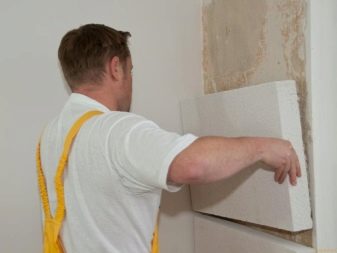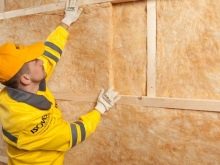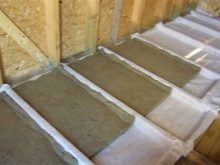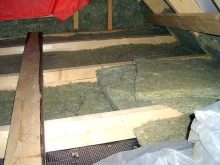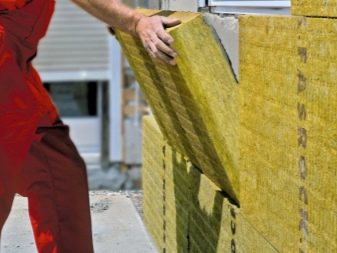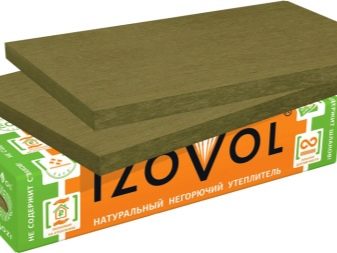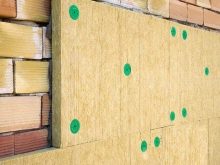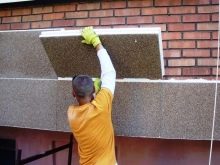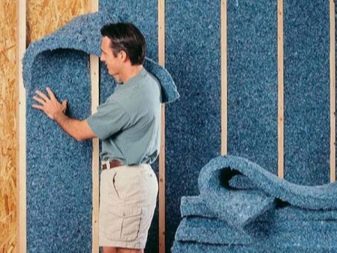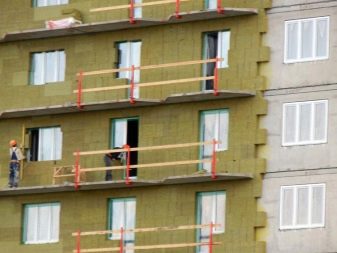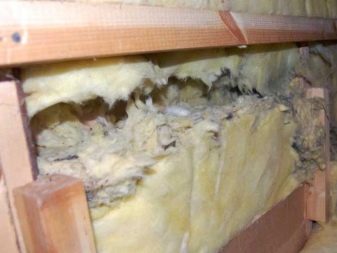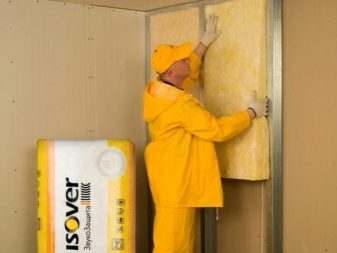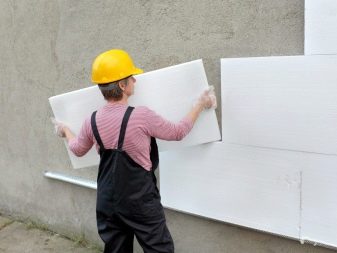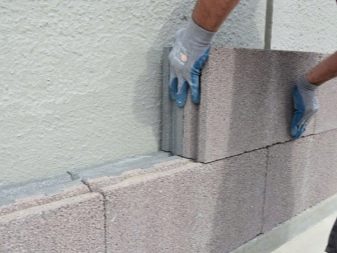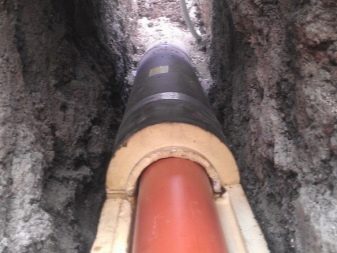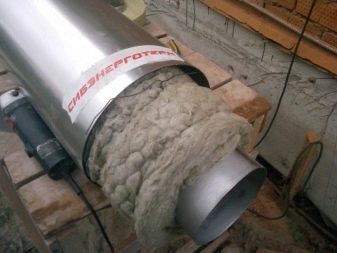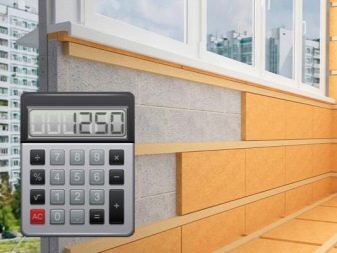We select the thickness of the insulation
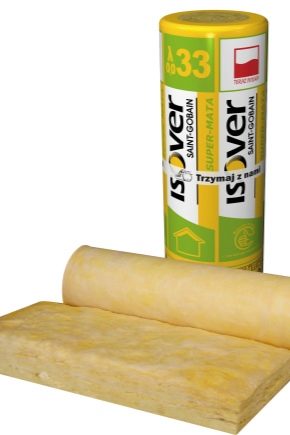
All home associated with comfort, warmth and comfort. Heat in the house is created with the help of a high-quality heating system, but the insulation of the house or apartment remains an important factor, because often, especially in old buildings, the state of wall insulation leaves much to be desired or is completely absent.
For insulation there is a specialized material - insulation, which is mounted on external walls, ceilings or floors.
Indoors (on the inside of the walls) usually do not.This is due to many factors, including the unprofitability of this lesson.
An important indicator remains the thickness of the heat-insulating material itself, which is specially calculated for the necessary volumes of heating, area and temperature outside the window.
Why is it so important to calculate correctly?
In the modern world, thermal insulation is necessary not only for greater comfort, but also for economy. The cost of heating is growing steadily, which hits the pocket more and more, and the problem of insulation also consists in saving due to heat retention.
Competently chosen thickness of both wall and floor or ceiling insulation allows to reduce the cost of utility payments several times.
In winter, the heat is kept much longer indoors, and in the summer, on the contrary, it retains excess heat from the street.
It seems to many that the greater the thickness of the insulating material plate, the greater the savings. But this is far from the case: in the summer it will be cooler, and in the winter it will be much hotter, but the wall structure may be subject to deformation and destruction. A smaller thickness may lead to an additional increase in energy consumption.
Thermal insulation of the house structure (ceiling, walls, floor) is a necessary part during repair or construction (both in a residential house and in buildings intended for the work of people). Selection of high-quality materials for thermal insulation is an important point in this matter, but much more important is a competent selection of material thickness. Factors such as: the durability of the structure and the technical characteristics of the direct operation of the building depend on it.
Between the first and second floor, the presence of air ducts is mandatory, and at the top - a chimney.
If you compare the thermal conductivity of different raw materials, you can see that the mineral wool plate holds it better than the construction of expanded clay concrete blocks.
Why do we need thermal insulation?
Many people do not fully understand how insulation thickness affects the durability and technical characteristics of a building. In simple terms, thermal insulation saves on utility bills.because heat losses are reduced by almost a third, and in some cases by half.
The side effect of heat insulation, which is sound insulation, is also important.This is especially important for apartment buildings in the city, where the sounds from the street can cause unnecessary discomfort. Extremely low sound insulation and have panel houses.
If we are talking about personal construction with our own hands, for example, our own mansion or a country dwelling, then thermal insulation materials make it possible to reduce construction costs by replacing the materials for building walls.
So, using thick polystyrene or mineral wool slabs (within 10 cm wide), it is possible to replace the walls with bricks. The load on these walls should be small, as a result, this method is suitable for single-storey buildings, building verandas or houses for guests.
Requirements for thermal insulation materials
There are a large number of requirements for thermal insulation materials, which are highlighted depending on the operational load for the new structure, weather criteria, material capabilities, etc.
One of the main and important characteristics of thermal insulation is the technical ability to conduct and retain heat.It depends on various factors, such as: the structure and porosity of the material, its density, as well as the level of absorption of moisture and humidity.
Thermal conductivity distinguish three classes of thermal conductivity:
- BUT - low thermal conductivity and heat saving (0.06 W / sq. M);
- B - average thermal conductivity and heat saving (0.06 - 0.115 W / sq. M);
- AT - high thermal conductivity and heat saving (0.115 - 0.175 W / sq. M).
To guarantee high-quality thermal insulation of the facade (butt), whether it is a high-rise structure or a personal small mansion, the insulation must be quite durable and strong in order to be able to withstand the weight of the final finish.
As a result, it is necessary to carefully select the material, based on what the wall will be covered during the exterior finish. Tile, for example, weighs quite a lot, so you need a solid foundation, but the wallpaper (as well as cork) will be perfectly attached in almost all cases, but it is not recommended to apply such a coating on the street.
Apart from the fact that thermal insulation must be as vapor proof as possible, it should not absorb moisture. This material should not ignite or burn, and also support burning (should fade after ignition), emit harmful and toxic substances,and when temperature drops should not be subjected to deformation.
Ways of warming
The reduction of heat loss depends on the correct selection of material, as well as on its location on the building. There are several ways to warm the walls, which differ in their properties, having both advantages and disadvantages.
There are the following methods for wall insulation:
- Wall. It is an ordinary brick partition with SniPovskaya thickness of 40 cm.
- Multilayer insulation. It is a wall covering on both sides. This is done only at the time of the structure of the structure, otherwise it will be necessary to dismantle part of the wall.
- Outdoor insulation. The most common method is performed by insulating the outer side of the wall, after which a layer of finishing is applied. Of the disadvantages of this method is the need for additional hydro and vapor insulation.
What are the dimensions of the material?
If the heat-insulating material is very thin, cold and dampness seeps through the wall, but excessive thickness is also useless.
The standard dimensions of the material are as follows:
- 75 mm;
- 150 mm;
- 60 mm;
- 200 mm;
- 70 mm;
- 80 mm;
- 50 mm;
- 15 mm.
If the layer of insulating material is less than the prescribed one, even a couple of centimeters, the walls will let through the cold and become damp.
For example, the dew point, which is located outside the structure, will move slightly inside the wall, due to the fact that the insulating material will not be able to hold it. As a result, condensate will appear on the wall plane, it will slowly dampen, crumble, mold and fungus will appear.
A very thick layer of thermal insulation will lead to unnecessary costs. Any good owner wants to build not only a high-quality and reliable house, but also to save as much as possible, and a thick layer of insulation costs good money. Also, with a large thickness of thermal insulation, natural ventilation from inside the walls is not observed, as a result of which it becomes very stuffy and uncomfortable inside the building. In addition, if the insulation is performed on the inside of the wall, a thick layer of material will take a very large amount of free space, reducing the square of the room, both visually and physically.
That is why it is important to be able to calculate the thickness of the insulation.
Another very significant point - the determination of the thickness of the heat insulator depends directly on the raw material of which the wall is made. Based on this information, we can conclude about the thermal conductivity and thermal properties of this part of the structure. Such data make it possible to qualify heat transfer in any square meter of space. An absolute list of these materials is specified in SNiP No2-3-79. Insulation density varies, but is usually used from 0.6 - 1000 kg / m3.
In modern construction often use foam blocks, which are subject to certain requirements for thermal insulation:
- GSOP - 6000;
- resistance to heat transfer and thermal transfer of walls - over 3.5 C / sq. m / w;
- resistance to heat transfer and thermal transfer of ceilings - over 6C / sq. m / w
In case you intend to put a certain number of layers of heat insulator, the characteristics of heat transfer resistance are calculated as the sum of all layers. In this case, it is necessary to take into account the thermal conductivity and the properties of the material from which the walls are prepared.
Calculation schemes and calculators
In order to perform the thermal calculation of a heat insulator, it is necessary to take into account a few points that are not easy enough for an inexperienced builder to understand.The most necessary indicator is considered to be the characteristic of the wall and the climatic features of the territory where construction is underway, as well as their ratio. As soon as you have decided on the technology of the work and selected the necessary material, you should proceed to the calculations.
Necessary advice: for warming the first floor in a private or multi-family house it is recommended to choose the same material from the same manufacturer from the same batch.
It is imperative to insulate pipelines and other highways from the street that lead into the housing. This is one of the most potentially dangerous places of great local heat loss and cold penetration through them (it takes up to 30% of heat).
When you have decided on the technology of work and chose the right material, you can start the calculations.
What data is needed?
The thermal conductivity of the walls and ceiling has certain minimum values. For calculation it is necessary to use the formulas:
- wall: R = 3,6-R;
- ceiling: R = 6-R.
After obtaining the numerical value of the difference, it is necessary to calculate the thickness of the insulation using the following formula: p = R * k, where p is the desired thickness of the insulation.
When using thermal insulation made of polystyrene or mineral wool, the recommended value is 10 cm (in brick houses, as well as in houses with panel walls, loggias, on the balcony).
The heat transfer coefficient of all materials of the wall or other areas in a residential building is determined separately, depends on different climatic conditions and is individual:
GSOP = (tv-tср) x * zwhere:
- tv - average indoor temperature;
- tot - average ambient temperature;
- zot - the duration of the heating season in days (if you have autonomous heating, then take the value based on personal experience)
Calculators
For those who do not want to learn these formulas by heart or have no opportunity to calculate everything on their own, memorizing various specifications, there is a huge variety of online calculators.
They are specially created for the selection of the optimal thickness and take into account the different set of factors and characteristics of both insulation and walls. Some of them have a built-in product range, in which you do not need to enter additional values - it will be sufficient to choose the type of insulation, its brand and model, as well as the type of material from which the wall is made.
Very popular among such calculators is Rockwool., which is developed by experienced specialists in the field of construction. This calculator also calculates the energy efficiency of the insulation, giving all the necessary values in the report. Also for those who do not want to understand the functionality, a simple step-by-step instruction is provided on the site of this calculator, which will not be difficult to understand: just click on the “Start calculation” button and follow the prompts.
Thus, even a novice in construction will be able to calculate the required thickness of insulation. However, you should be guided by helpful tips from the pros.
It should be remembered that if you ignore the calculations of the thickness of the insulating material, a number of problems may arise, including - the construction structure itself may be damaged, which is almost impossible to correct, and if possible, this will require additional, much higher costs (you will have to wait for urgent or overhaul from the management company).
How to calculate the thickness of the insulation, see the following video.


